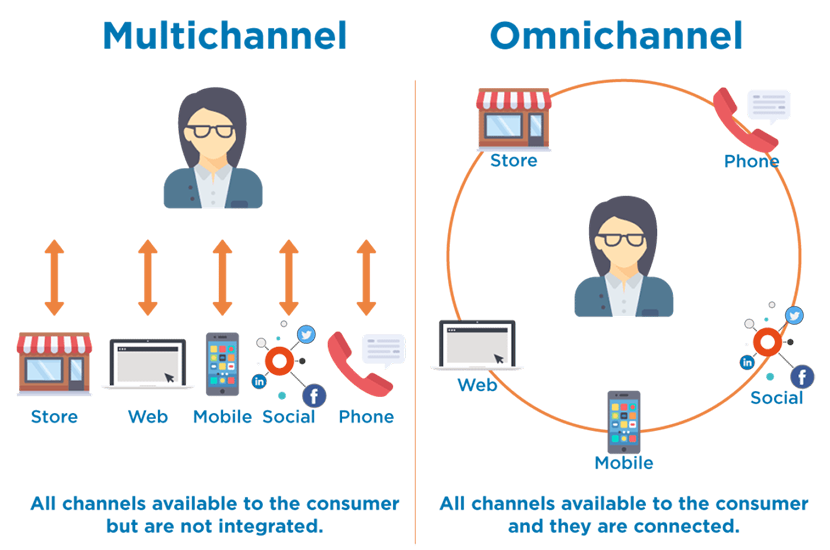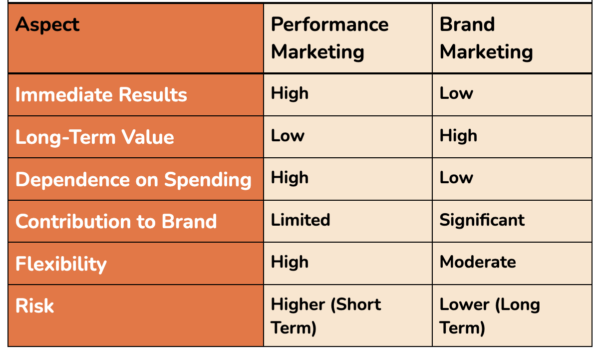What’s better — brand marketing or performance marketing?
If you ask any data-driven marketer, they’ll tell you performance marketing is king. If you ask an experience-driven marketer, they’ll tell you it’s brand marketing.
While we’re normally all about the data that comes from performance marketing, this article will take a slightly different tone à la focusing on your brand versus transactional marketing. By the end, you’ll have a better sense of where to prioritize your focus in the short term and the long term.
The AirBnB Case Study: Rethinking Their Marketing Approach
Airbnb, a behemoth in the hospitality sector, explored its own series of marketing experiments in moving away from conventional performance marketing tactics to a more brand-centric approach.
Initially, Airbnb’s strategy heavily relied on performance marketing, particularly Google Ads, to the tune of $1 billion per year, as was discussed by Brian Chesky on Lenny’s Podcast:

This approach, typical of many tech giants, prioritized immediate visibility and customer acquisition.
The logic was straightforward: Invest heavily in ads to secure top spots in search results, driving traffic and, subsequently, bookings. This method, though effective in the short term, hinged on continuous financial input to maintain its momentum.
Airbnb’s Initial Marketing Strategy

The Pivot Toward the Brand and Its Product
However, a strategic decision marked a significant departure from this path. Airbnb chose to pivot towards enhancing its product and developing its brand. This change was not just a reprioritization of marketing channels, but a fundamental rethinking of how Airbnb interacts with and is perceived by its audience.
The focus on product enhancement meant improving the user experience, innovating new offerings, and ensuring that every touchpoint with customers reflected Airbnb’s values and vision. By enhancing the product, Airbnb aimed to create a more compelling and memorable experience for its users, driving organic growth and loyalty.
Building Long-Term Equity Through a Brand
Brand development was another crucial aspect of this strategic shift.
Instead of relying solely on paid marketing, Airbnb started investing in building a brand that resonates deeply with its audience. This included brand storytelling, community building and establishing a unique brand voice and identity. The goal was to create an emotional connection with customers, turning them into brand advocates.
The Outcomes of the Shift

Performance Marketing: A Double-Edged Sword
Performance marketing, often characterized by its immediate results in terms of conversions and sales, presents a challenge. It’s akin to renting audience attention: The moment investment stops, so does the visibility.
This approach, while effective in a limited scope, raises questions about its sustainability and long-term impact on brand value.
So what should brands do? They need to invest in their long game as much as their short game.
Make no mistake – paid ads offer immediate visibility and can be highly profitable. That’s a given. If a business can double its investment, the logic dictates to continue spending. However, this approach often lacks in contributing to the long-term narrative and value of a brand. It’s crucial to recognize that paid ads are not inherently negative, but should be part of a broader, more balanced marketing strategy.
Key Takeaway: Paid channels, by their very nature, are transactional. If well optimized, you’ll get out what you put into it. Pair your performance marketing avenues like paid ads with long-term brand-building structures that will sustain your brand presence long after you hit the stop button on paid media.
Building a Brand: More Than Just Marketing
Creating a successful brand extends beyond marketing tactics. It involves:
- Developing a great product
- Creating an exceptional user experience
- Fostering a connection with the audience
This holistic approach to brand building ensures that even if paid marketing efforts are reduced or stopped, the brand continues to thrive through its reputation and customer loyalty:

A strong brand resonates with customers, creates loyalty and can lead to organic growth. For Airbnb, the focus shift towards enhancing their product and building brand value was a strategic move to create a more sustainable and recognizable brand in the long run.
Investing in the brand itself often yields long-term benefits.
When you focus on the story that your brand tells, it will give it a sense of identity and belonging in your audience’s lives. You want to reach the point of presence in their minds that it’s second nature to think of your brand as the solution to their needs. That’s the ideal outcome of effective brand marketing!
The Omnichannel Approach: Diversifying Marketing Efforts
Where all of this comes together in the omnichannel approach. It’s a method that mixes all types of marketing channels — SEO, paid ads, social media, etc. — to create a more robust and resilient marketing strategy that incorporates aspects of brand marketing and performance marketing.

When you refrain from putting all of your eggs in one basket, you’ll be able to mitigate risks and ensure a more stable and consistent brand presence across various platforms — not to mention you’ll have maximize your presence over sticking to one or two channels that work.
For instance, while SEO can attract organic traffic through search engines, social media can engage and build a community around your brand. Paid ads can then amplify reach and target specific audiences effectively. This combined-arms strategy ensures that your business is not overly reliant on any single channel, which can be particularly vulnerable to market changes, algorithm updates, or shifting consumer behaviors.
Key Takeaway: If you diversify your marketing efforts, you can adapt more easily to market changes, maintaining a consistent and visible brand presence across all customer touch points.
Pros and Cons of Performance Marketing vs. Brand Marketing
Let’s rein things in here by showing you a list of pros and cons of how different types of marketing results are derived from short-term performance marketing initiatives and long-term brand investments:

Last Thoughts on Building a Brand over Chasing Quick Wins
While performance marketing and brand investment serve different purposes, they are not mutually exclusive. The key is to find a balance that leverages the strengths of both approaches.
Your business should aim for a strategy that combines the immediate benefits of performance marketing with the sustainable, long-term growth offered by investing in your brand’s purpose and identity.
Try looking at your brand through an omnichannel lens, not relying solely on one marketing tactic. If you do, then you’ll have a really good chance of scaling your brand’s presence for the long haul.
If you’re ready to level up your brand marketing strategy, Single Grain’s brand strategists can help!👇
For more insights and lessons about marketing, check out our Marketing School podcast on YouTube.



